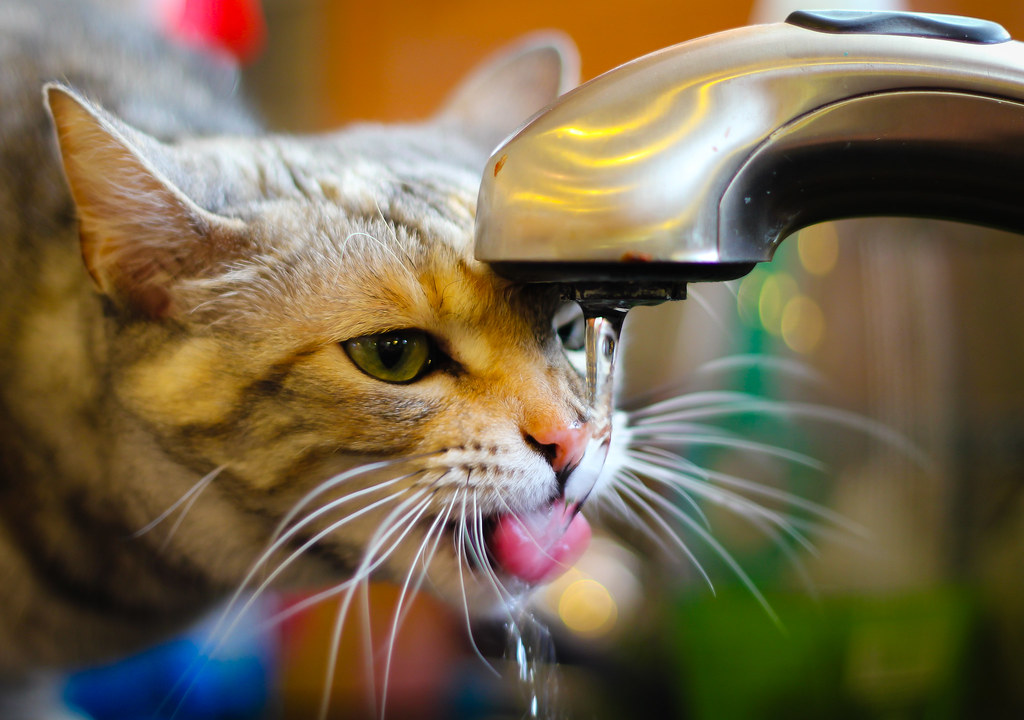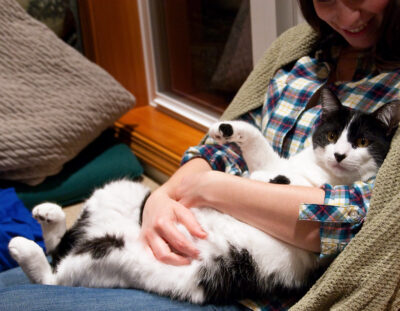Cats are fascinating creatures, each with their own quirks and personality traits. Spending time simply observing your cat can reveal so much about what makes them tick. Pay attention to when they’re most active, what toys they prefer, and how they interact with people and other animals. This doesn’t just help in understanding them; it builds the groundwork for a solid bond.
Different Cats Have Different Personalities

Felines, much like humans, run the gamut in terms of personality. You’ve got the social butterflies who love attention and then there are those who treasure their alone time. Identifying which category your cat falls into can guide you in how to interact with them. For example, some cats enjoy being held, while others might prefer a quiet sit beside you.
The Importance Of Cat Body Language

Cats ‘talk’ in their own way through body language. Ears pulled back might signal fear or annoyance, while slow blinking is often a sign of affection. Recognizing these signals goes a long way in understanding your cat’s moods and needs. A cat’s body language can tell you when they’re itching for a play session or when they’d rather nap undisturbed.
Being patient is key in any relationship, and it’s no different with cats. Sudden movements or forced interactions can make them skittish. Allowing them to come to you at their own pace can foster trust and comfort. Through patience and observation, you start to see the world from their whiskered perspective, making your bond that much stronger.
Effective Communication: Speak Your Cat’s Language

Yes, you can learn to “speak” your cat’s language. Even though they don’t rely on words as we do, they use a combination of sounds, gestures, and actions to express themselves. Picking up on these signals helps you understand what they want—whether it’s a meow for food or the twitch of a tail signaling they’re done with playtime.
The cat will respond to the tone of your voice, and in fact, how you speak to them matters a great deal. Using a soft voice can be soothing and inviting, while sharp tones might put your cat on edge. They may not grasp your specific words, but they are very aware of the emotions behind them. Pay attention to the message you are communicating.
The Eyes Have It
The eyes express messages: they are not just a way to see. A cat will use the eyes to show love and affection. Remember that the “slow blink” from your cat becomes their way of saying “I love you” Returning these slow blinks can create a moment of shared affection and become akin to feline flattery.
Routine Is Vital
Cats are creatures of habit. Therefore, establish a routine and stick to it. Meals should be served at the same times. Playtime and grooming time can also become part of the regular schedule. Playtime provides physical exercise and mental stimulation. Grooming allows you to provide a bit of pampering. After all, helping kitty with the daily arduous task of licking the whole body to get clean must provide some relief.
Creating a Safe and Stimulating Environment

Consider the selfish cat who must look out for Number One. What things does he find important? It seems obvious that he would need safe places to hide and to be alone. Provide these for him in your home. He also likes to observe the world from a high place where he is comparatively inaccessible to other creatures. Give him a high perch or two which allows him to watch what goes on around him while being safely removed from the rest of the world.
It’s in a cat’s nature to hunt. Provide him with in interactive toys to create the effect of a chase-and-capture. The physical and mental exercise such activities provide becomes most important, especially to an indoor cat. Make sure to rotate the toys so he gets a lot of variety.
Provide Amenities

Of course, the amenities are important, such as a cuddly, soft bed, plenty of scratching posts, a clean litter box, and high-quality nutrition. Making sure he gets proper hydration ranks high on the list of important considerations. You might try a cat water fountain, cleaning it regularly, as it ensures the cat will have clean, flowing water whenever he wants it. Even the hated vet visits should form part of the cat’s regimen, as these can keep him healthy or stop potential problems before they start.
If your cat goes outdoors, make sure that you consider his safety. Perhaps a catio is your answer, or leash-training. These can enrich kitty’s life and provide them with a sense of adventure and safety at the same time.
Building Trust Through Positive Reinforcement
The stand-alone cat does not respond well to punishment. He does not understand why you would punish him, and you can actually erode the bonds of trust you have worked so hard to create. However, if you guide gently and reward good behavior, you will go much, much farther in creating trust and understanding.
A Little Bribery Goes A Long Way

Learn what treats prove irresistible to your cat. You will find great power in such treats, as they can go a long way toward encouraging the behavior you desire. If the cat gets a treat for doing something you want him to do, it furnishes enough of a selfish motive for him to continue such action. In this way, you both win.
Find out the areas on his body where scratching and petting offer the most pleasure. Not only will he be getting something he really likes, but you are building your bond at the same time. Once you discover the spots he truly enjoys, cater to his wishes and touch or scratch him there. Your reward might come in the form of an ecstatic purr. If you institute a gentle grooming session, you can also build trust and closeness.
Heed The Signals

It is most important to listen and watch for the signals from your cat. Don’t push him to cuddle or be held if he isn’t interested. Let the cat show you the level of interaction he finds comfortable. Don’t force your attention and endanger his trust. Learn his boundaries and respect them. In time, your cat will seek more attention, especially if he realizes it will be given on his terms.
Though he might be considered a selfish creature, with time and patience you can create a strong bond with him. He will respond with love and affection if he feels that the reward he receives in return makes it all worthwhile.
References I used for this post:
https://www.msn.com/en-us/health/wellness/20-things-you-can-do-to-create-a-lasting-bond-with-your-cat
https://www.catster.com/cat-behavior/how-to-bond-with-your-cat
https://pedia.canforcat.com/catpedia/10-engaging-activities-to-strengthen-your-bond-with-your-cat/

